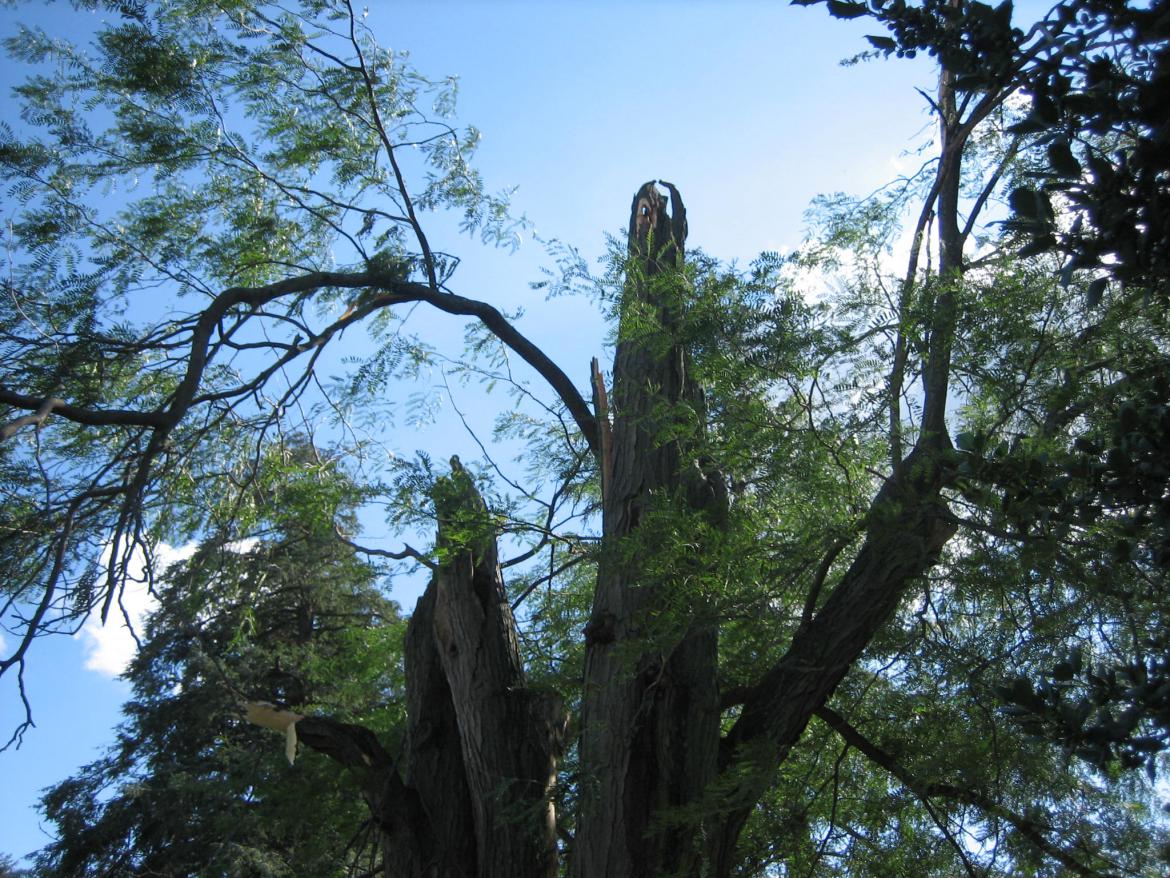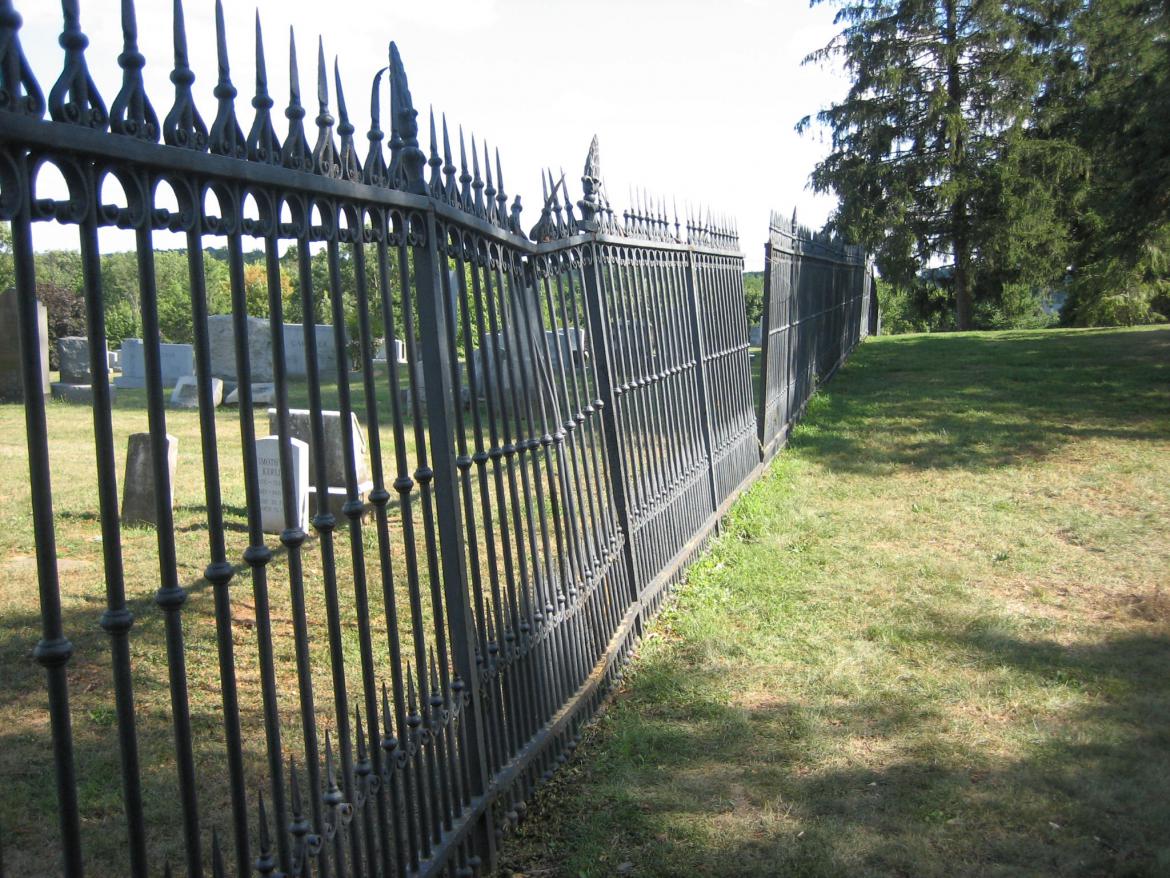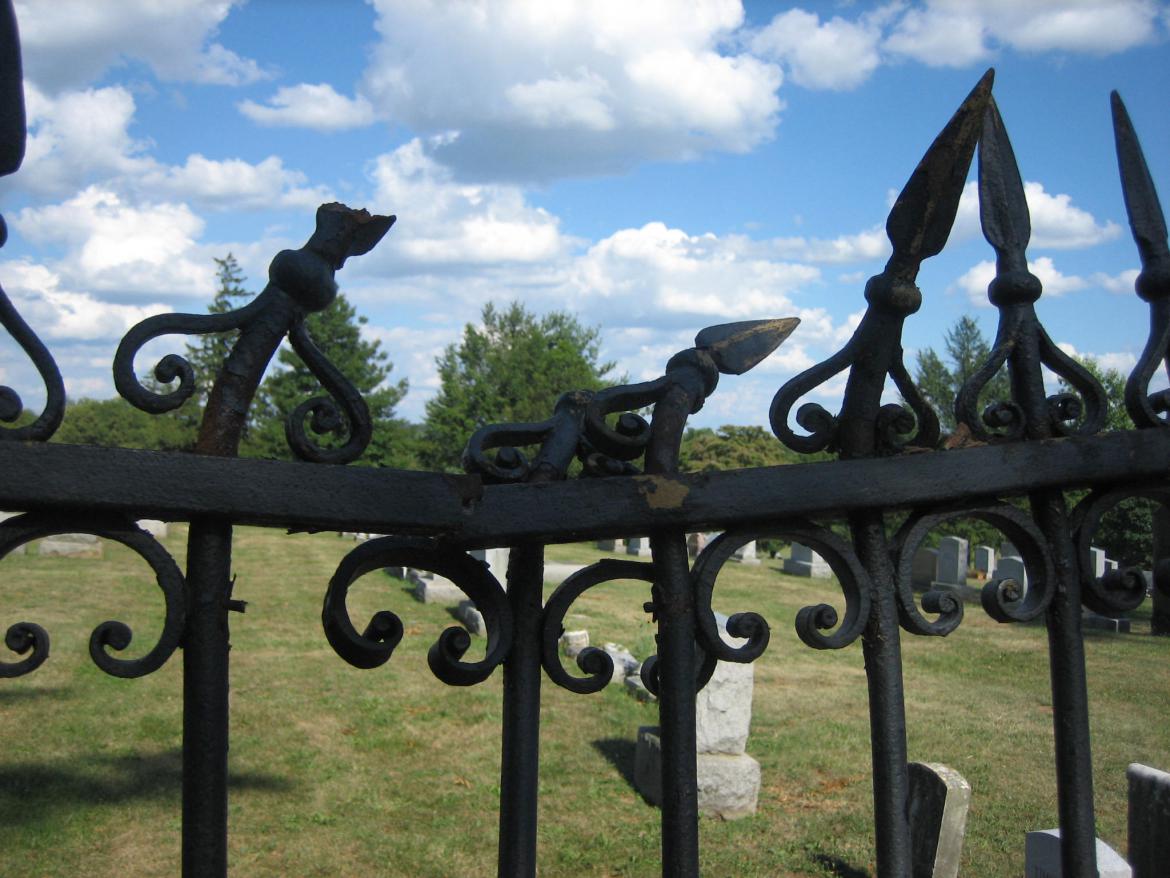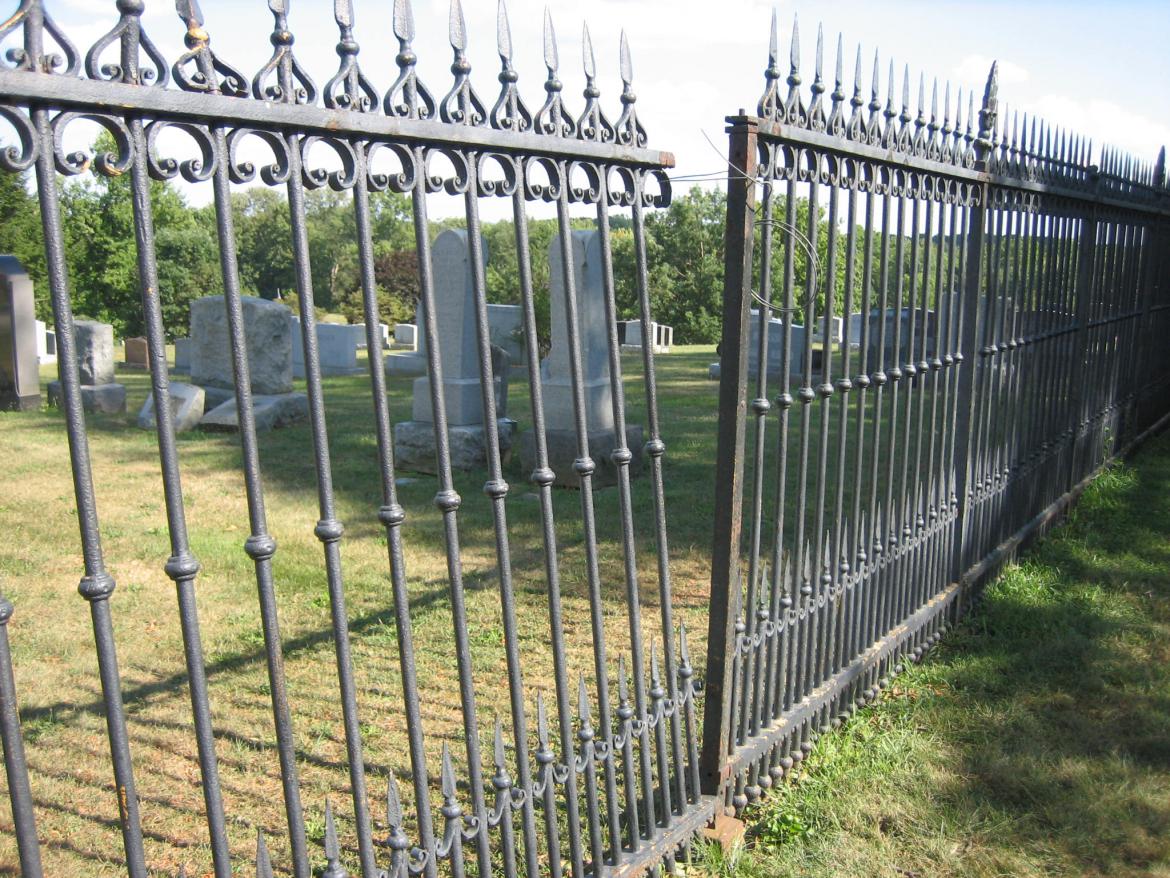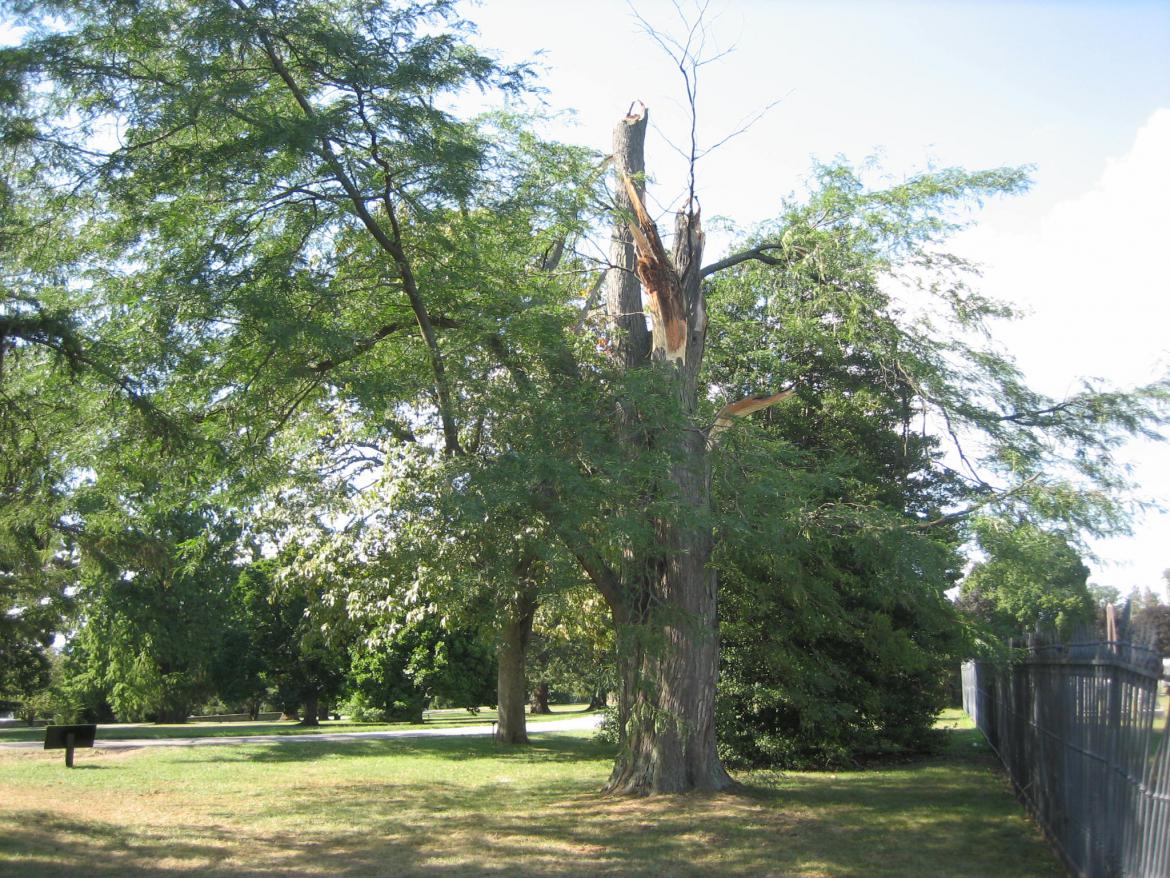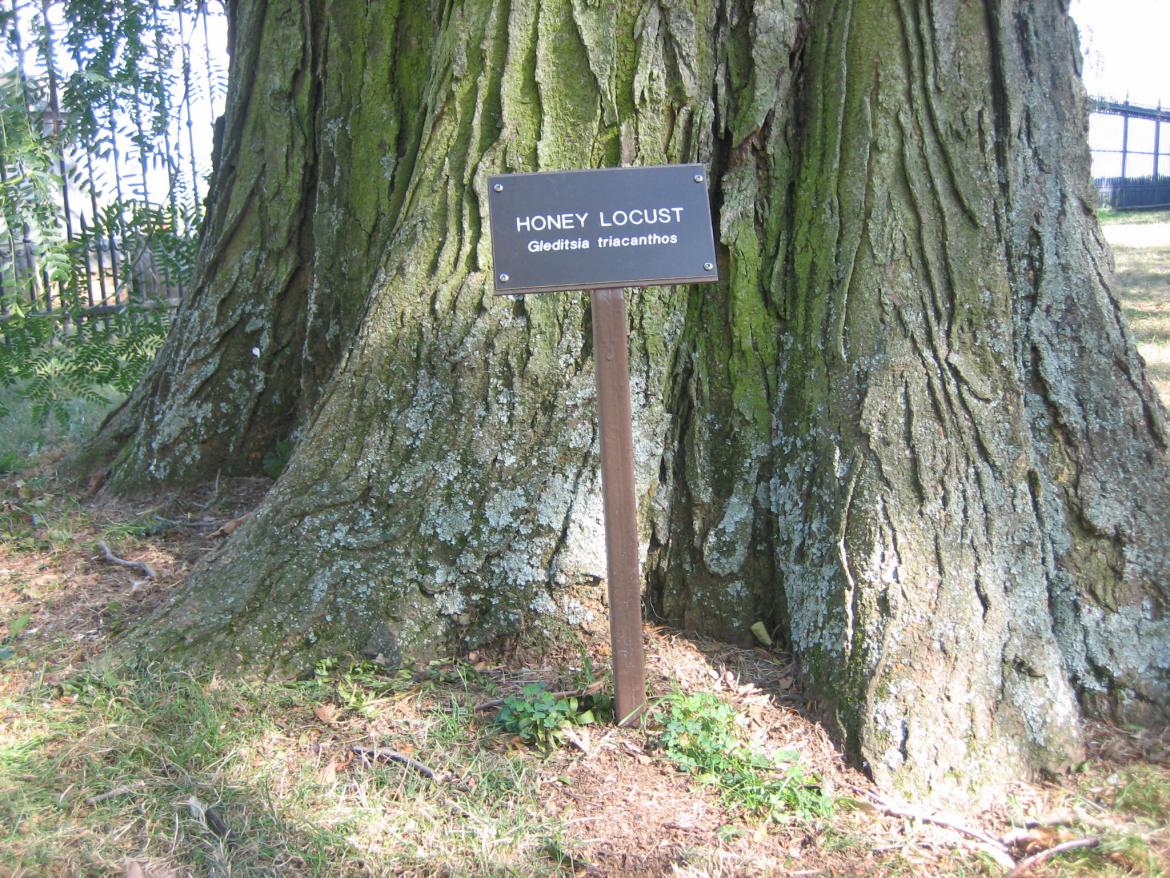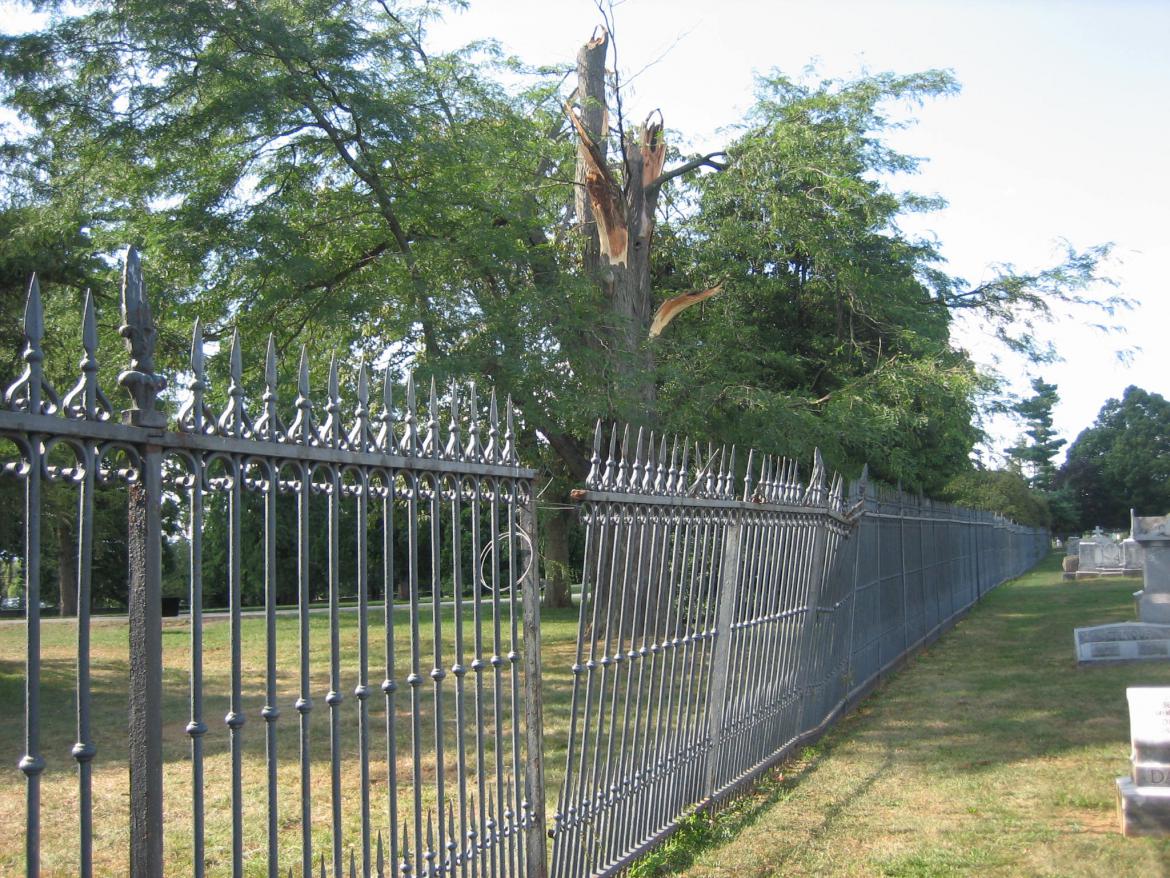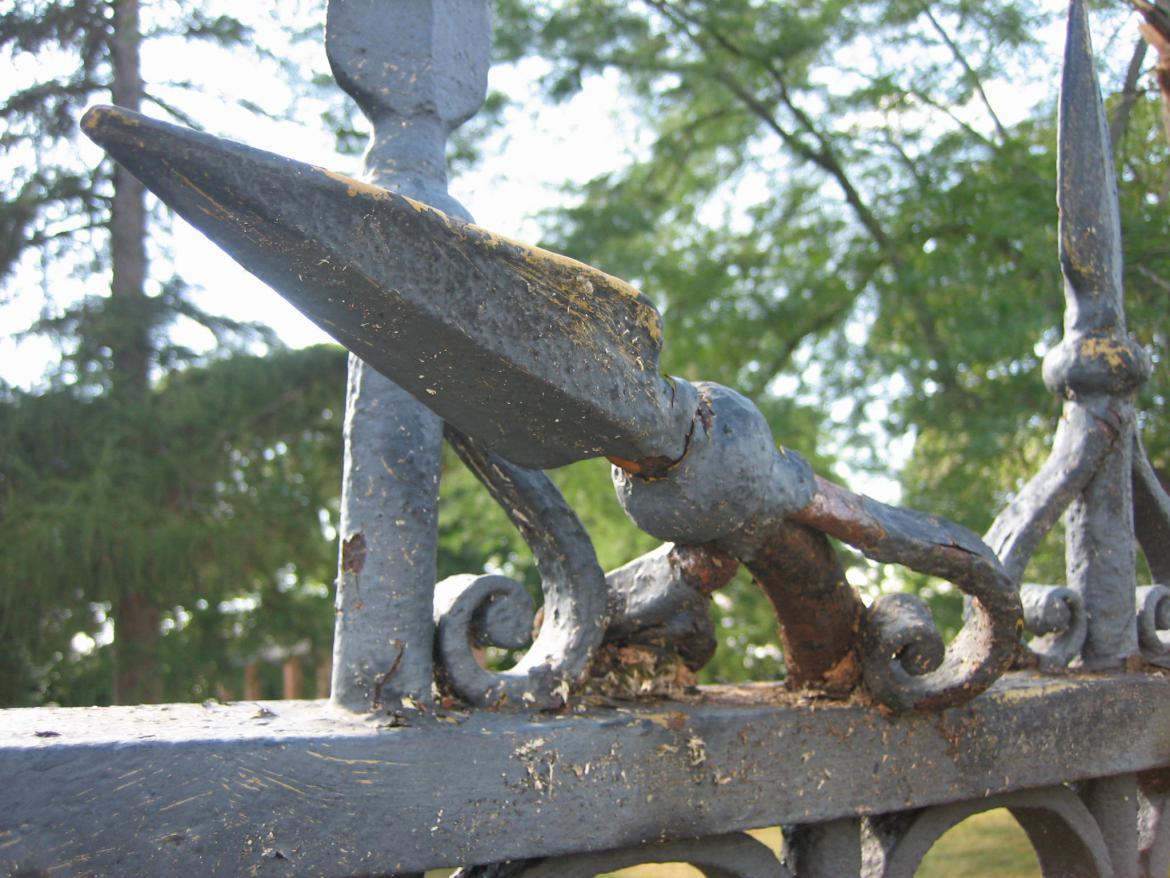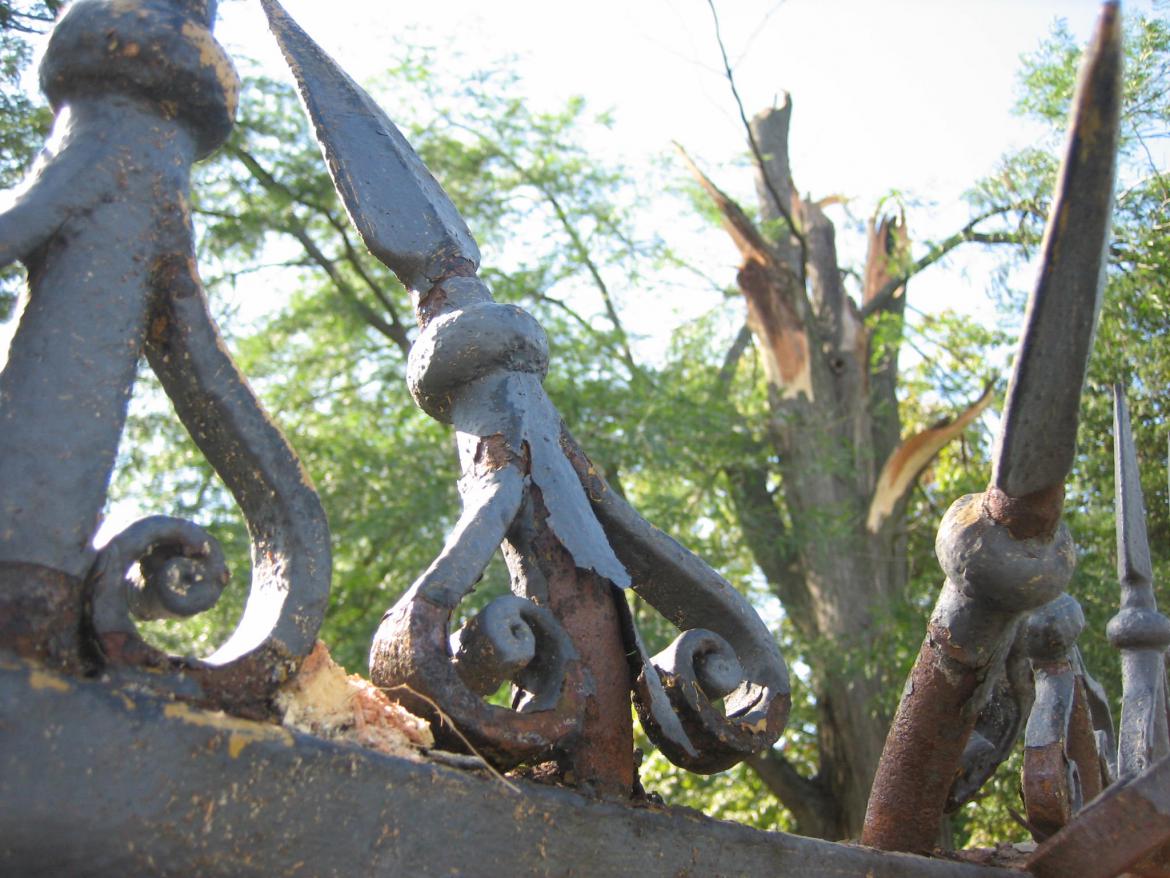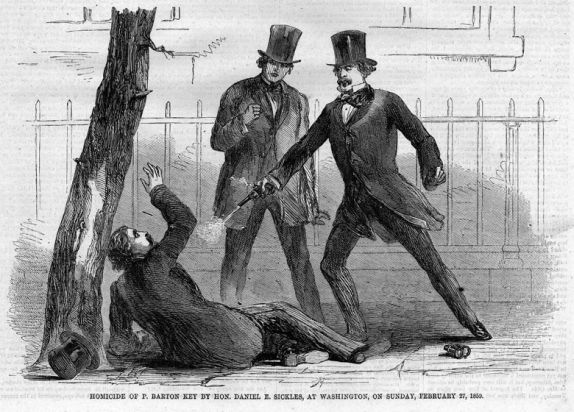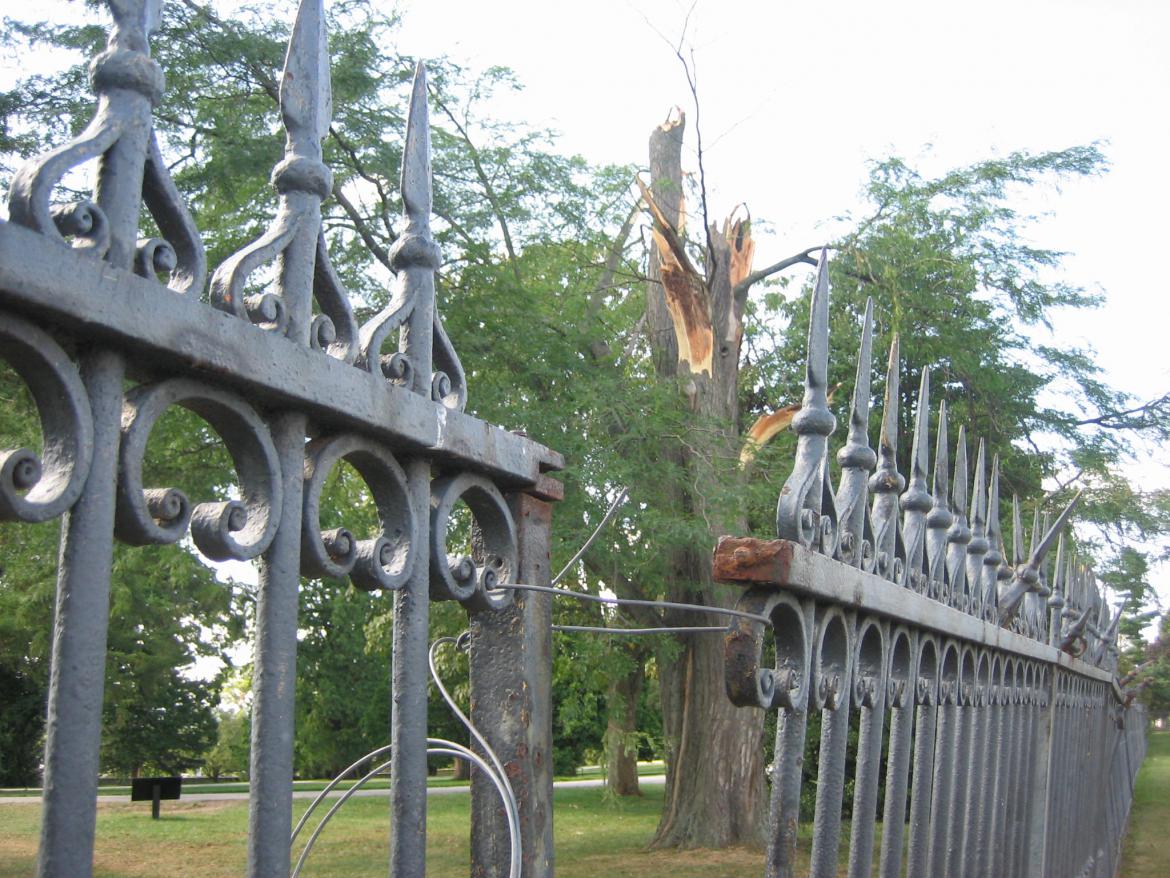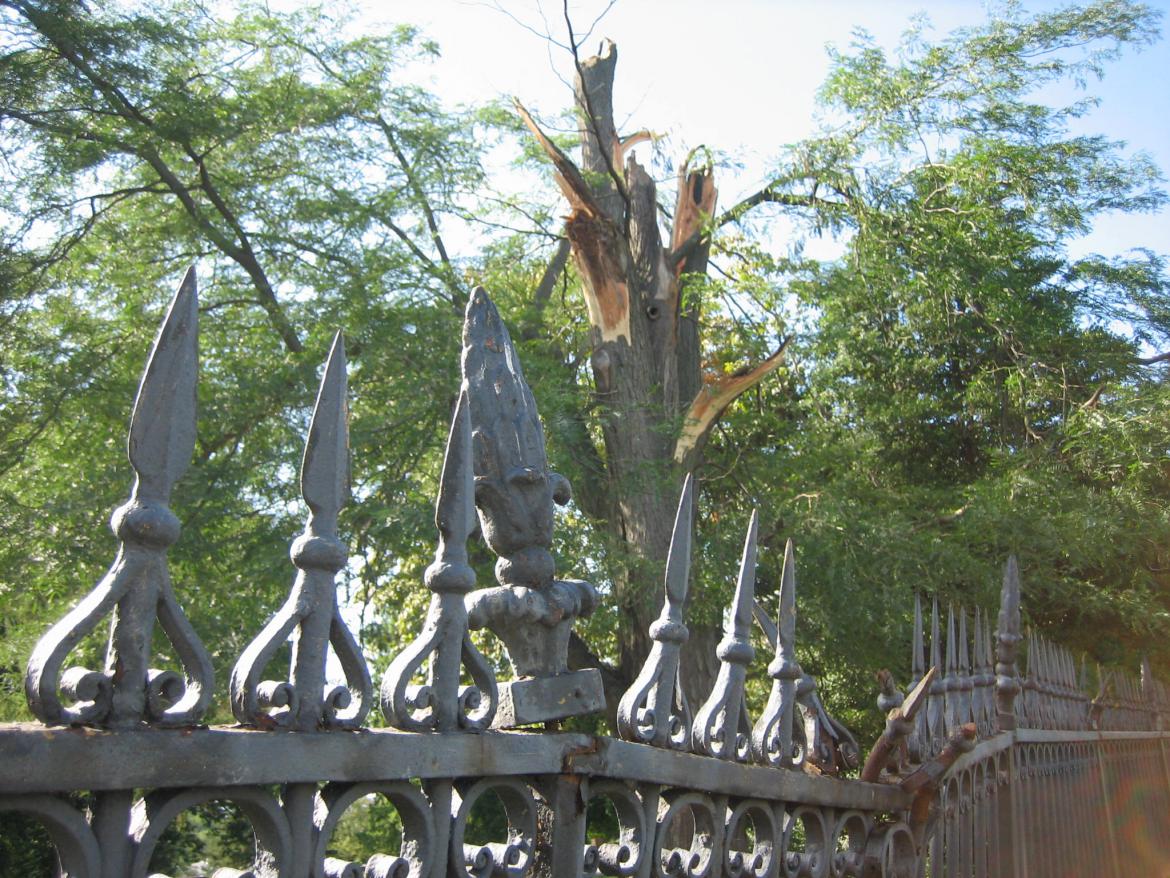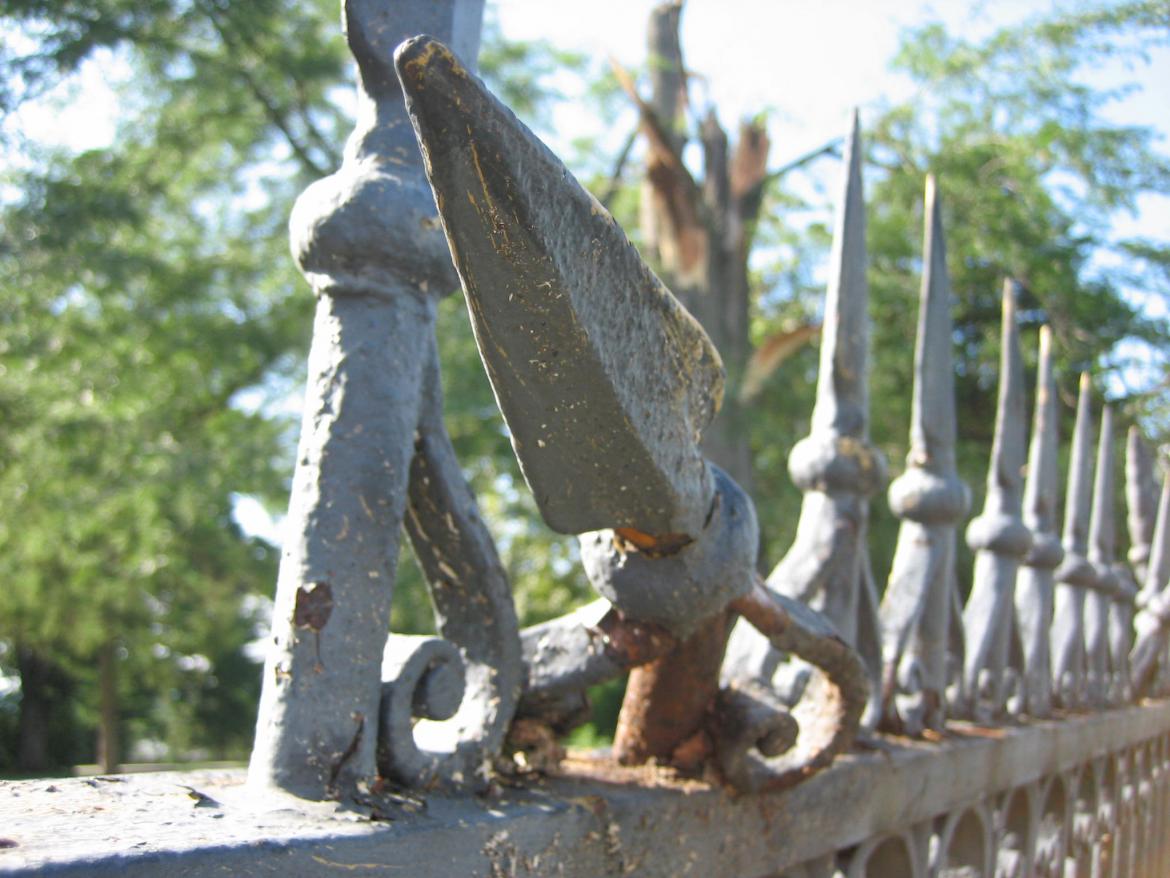The Gettysburg Witness Tree in the Gettysburg National Cemetery is still standing. The National Park Service has decided to see if it will survive. This view was taken from the west facing east at approximately 4:30 PM on Tuesday, August 12, 2008.
The Gettysburg Witness Tree damaged in the National Cemetery on August 7, 2008 is still standing, and the “debris field” has been cleaned up around it. However, there has been some “collateral damage.” The iron fence separating the Gettysburg National Cemetery from Evergreen Cemetery (local civilian cemetery) was damaged when the tree fell upon it. This fence is known as the “Sickles’ Fence” near which Sickles murdered Philip Barton Key in 1859 and was acquitted of the murder by temporary insanity. See our previous post about this witness tree on August 10, 2008. See our other posts on Gettysburg Witness Trees on April 30, 2008, May 27, 2008, August 16, 2008, August 27, 2008, and September 8, 2008.
Almost all the branches that were on the ground around the tree have now been cleaned up. This view was taken from the northwest facing southeast at approximately 4:30 PM on Tuesday, August 12, 2008.
When one looks at the damage at the top of the tree, one wonders how much taller the tree was before the top blew off. This view was taken from the northeast facing southwest at approximately 4:30 PM on Tuesday, August 12, 2008.
If the fence separating the Soldiers National Cemetery from Evergreen Cemetery is any indication, the tree may have lost 30 feet off its top. This view was taken from the north facing south at approximately 4:30 PM on Tuesday, August 12, 2008.
In places, the fence was heavily damaged when the tree fell on it. This view was taken from the northwest facing southeast at approximately 4:30 PM on Tuesday, August 12, 2008.
The weight of the tree’s fall also knocked this section of fence loose, and the National Park Service is attempting to hold it in place with wire. This view was taken from the northwest facing southeast at approximately 4:30 PM on Tuesday, August 12, 2008.
So when the National Park Service reports that 70% of the tree was lost, it was talking about not only in height, but the width of the branches at the top of the tree. This view was taken from the south facing north at approximately 4:30 PM on Tuesday, August 12, 2008.
We wanted to document that we had the correct honey locust tree that was damaged. This view was taken from the northwest facing southeast at approximately 4:30 PM on Tuesday, August 12, 2008.
The section of the fence that is separated is approximately 40 feet away from the tree. This view was taken from the southeast facing northwest at approximately 4:30 PM on Tuesday, August 12, 2008.
If one is desperate to legally acquire some wood from a Gettysburg Witness Tree, here’s your chance. The yellow bits on the fence are the wood from the tree when it attempted to impale itself on the fence. This view was taken from the southeast facing northwest at approximately 4:30 PM on Tuesday, August 12, 2008.
Here’s a little chunk of wood just waiting to be whisked away. This view was taken from the southeast facing northwest at approximately 4:30 PM on Tuesday, August 12, 2008.
Of course this fence has an interesting history or legend of its own. It was originally located in Lafayette Park in Washington, D.C. across the street from the White House. Near this fence, in 1859, Congressman Daniel Sickles murdered Philip Barton Key, the son of Francis Scott Key, for having an affair with Sickles’ wife, Theresa. This view was taken from the southwest facing northeast at approximately 4:30 PM on Tuesday, August 12, 2008.
Sickles was one of the first, if not the first, person in the United States to be acquitted of murder by temporary insanity. One wonders how accurate this drawing of the fence is, since it doesn’t resemble the fence at Gettysburg. This view was taken from the south facing north at approximately 4:30 PM on Tuesday, August 12, 2008.
The Lafayette Park or Lafayette Square iron fence (Sickles’ Fence) was donated to the Gettysburg Battlefield Memorial Association by a joint resolution of Congress on October 12, 1888 through the efforts of Congressman Daniel Sickles. The District of Columbia for some reason declared the fence was not longer needed, and Sickles urged Congress to pass the resolution. The legend states that Sickles wanted the fence on display at Gettysburg so that he could “show the world how I got away with murder.” This view was taken from the southeast facing northwest at approximately 4:30 PM on Tuesday, August 12, 2008.
This was not the original fence that separated the cemeteries. The original fence was an “old gas-pipe fence” that was considered ‘neither artistic in character nor valuable from a utilitarian viewpoint,’ according to Louis King’s history of the National Cemetery. This view was taken from the north facing south at approximately 4:30 PM on Tuesday, August 12, 2008.
The Lafayette Park/Sickles’ fence was first located on East Cemetery Hill in April, 1890. According to the Gettysburg Battlefield Memorial Association minutes, on July 12, 1889 the group resolved that “so much of the iron fence, donated by the U. S. Government, be used as is necessary to enclose the front of East Cemetery Hill to Slocum Avenue, and by said avenue to the turn to Culp’s Hill, and that it be erected unpainted, in granite blocks, and according to the lay of the land, the contractor to furnish any castings that are necessary.” This view was taken from the northeast facing southwest at approximately 4:30 PM on Tuesday, August 12, 2008.
The old gas pipe fence separating the cemeteries was considered too unsightly, and it was eventually removed as part of a Civilian Conservation Corps project. According to the Superintendent’s monthly report of April, 1934, this old East Cemetery Hill/Lafayette Square/Sickles’ fence was taken down by the Park Service on East Cemetery Hill at the end of 1933 and beginning of 1934 and re-erected along the line once occupied by the gas-pipe division fence. In April of 1934 the fencing was cleaned and painted on its relocated site. This view was taken from the northwest facing southeast at approximately 4:30 PM on Tuesday, August 12, 2008.



